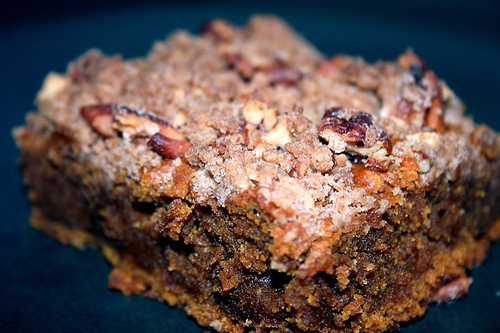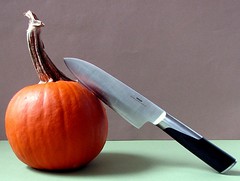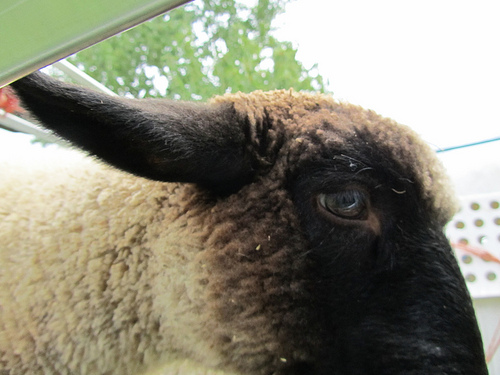Archive for October, 2010
Why Buy It when you can Make it?
I’ve been thinking a lot lately about all the things we buy that could actually be made – by hand. I think about it at work, when I drive my truck and especially when I’m out running errands. I tell myself over and over again, “I could make that”, “Why do I need to buy it?” Yes – why do I need to buy something that is wrapped in layers and layers of plastic and then put into a cardboard box, when I have all I need right at home, bought and paid for, for a lot less than the final product?
And so, my new motto has become “make it, don’t buy it”.
From fresh baked bread to jams; from seasoned mixes to boxed rice substitutes; nesting boxes, sheep fences, garden shelters, I have been on a path of making what I need – myself – and doing a pretty fine job of it too. The best part is I don’t have all those “fake” ingredients and chemicals common in processed foods. Nor, am I perpetuating the slavish working conditions of factory workers in foreign countries.
Won’t you join in and make a few more of your daily needs by hand?
To get started, why not try baking homemade bread or making fresh pizza dough in the coming week? Read the rest of the story »
Pumpkin Butter Crumb Squares

Rarely do I use boxed cake mixes, but when I ran across this recipe at a tasting a few years ago I knew I had to make an exception. The moist cake combined with the luscious creamy pumpkin butter makes it well worth the fudging. And, with your own homemade pumpkin butter it will be even better!
Ingredients:
- 1 box yellow cake mix
- 1 3/4 cup homemade pumpkin butter
- ¼ cup chopped pecans
- 3 large farm fresh eggs
- 1 Tbsp flour
- ¼ cup sugar
- ¾ cup butter
- 3 Tbsp milk
- 1 Tsp cinnamon
Directions:
Heat oven to 350 degrees.
Measure out and reserve 1 cup of cake mix.
Mix remaining cake mix with ½ cup melted butter and 1 egg. Press mixture lightly into the bottom of a 13×9-inch baking pan.
Mix pumpkin butter with remaining 2 eggs and 3 Tbsp of milk; pour over cake mixture in pan.
Mix reserved cake mix, 1 Tbsp of flour, ¼ cup sugar, ¼ cup of soft butter, pecans and 1 Tsp of cinnamon to a crumble. Crumble or sprinkle over top of pumpkin layer.
Bake for 35 to 40 minutes. Cool, cut and serve.
To make this seasonal dessert even more delectable top with a dollop of fresh whipped cream mixed with pumpkin pie spices. Yum!
Pumpkin Butter
 With fall in the air and Halloween just a few weeks away the pumpkin harvest in our county is in full swing. Beautiful orange globes of all sizes can be found in every farm stand, filling shop windows and decorating front porches. But what about eating pumpkins?
With fall in the air and Halloween just a few weeks away the pumpkin harvest in our county is in full swing. Beautiful orange globes of all sizes can be found in every farm stand, filling shop windows and decorating front porches. But what about eating pumpkins?
In the world of pumpkins, there are varieties that are prefect for carving – and those that are made for eating. That huge spooky-faced Jack O’Lantern may look great all lit up on Halloween night, but it isn’t the best choice for recipes that call for pumpkin.
There are carving pumpkins and then there are eating pumpkins!
While all pumpkins are edible, the larger varieties used for carving make poor cooking choices because they are low in sugar, have thin walls (which means less meat), and are stringy. Although, you can puree the meat of these pumpkins for soup or pumpkin bread, most pumpkin recipes taste better when using the smaller, sweeter varieties that weigh 3 to 6 pounds. Pumpkins with names like New England Pie, Baby Pam, Small Sugar, Trickster or Winter Luxury pretty much say it all. Eat Me!!
So – you have your perfect eating pumpkin…now what? Read the rest of the story »
Sneaky Stores – Savvy Shopper

Department stores may have dozens of ways to trick shoppers into spending more than they normally would, as described in this Daily Finance article , but they haven’t fooled this savvy shopper. Traveling down my path to a more frugal lifestyle full of experiences rather than stuff I have learned to spot these tricks and have a few of my own up my sleeve as well.
I rarely shop major malls any more. I usually buy only what I need rather than trendy “want” items. And, when I do purchase items I favor second-hand or thrift stores over department or specialty stores. I’ve recently discovered the last Friday of the month sales at the Salvation Army in my sisters town. Each time I’ve been I’ve found wonderful quality clothing, house wares and furniture.
I’m not much of a designer brand person. I would never pay those outrageous prices for a pair of jeans. But, if I can find good quality garments for a few dollars who cares whose name is on the tag. The greater point is to find items that will last for several seasons or several years. And that’s what I’ve done. On my last trip I found 3 pairs of Coldwater Creek jeans, in excellent condition, for $3 each; Land’s End long-sleeved t-shirts, great for wearing under my wool sweaters, for $1.50, a large ceramic mixing bowl for $2, 30-feet of garden fencing that will be perfect around new transplants or emerging seeds for $4, and an emersion blender, ideal for making pureed soups, fruit butters and of course smoothies, for $3.
But, my savvy shopping doesn’t stop there.
Ever get those $10 off cards or coupons in the mail or stuck to the Sunday paper? Well – if you’re a savvy shopper you can use them to your advantage, get what you need and not pay much (or anything) at all. I get them all the time and now have a few family members and friends that save them for me as well. I always carry a list of small items I need for the house.
The trick is to have a list of items that are priced at $10 or just over. Wait for the coupons to come out and then buy only one of those items with each coupon. If they don’t have the item you’re looking for – walk out of the store. Don’t wander around trying to find a replacement. Retailers know the longer a consumer is in the store the more likely they are to make a purchase. In the last month or so I’ve been able to buy four seasonal pillar candles ($.84); two short-sleeved t-shirts ($1.30); a package of sport socks (free); a scarf (free) and leather gloves for my thrift store raincoat ($4), and a frame for my daughters county fair picture ($1.69). Not bad. Not bad at all.
It’s a game and I’m playing it the best I can. Why spend good money on things that don’t matter? Why should I care what brand of jeans I wear while cleaning the garden or working the sheep. The truth is I don’t; don’t care to spend money on those things when it could go towards new livestock, our spring seed order or new equipment.
So, come on, folks. Play the game with me. See how much you can save. See how frugal you can become.
![]() photo credit: chocolategirl64
photo credit: chocolategirl64
Growing a Greener World Airs on PBS
Tour an organic farm and learn why organic food is so important for the health of our bodies and our planet: Tune in this weekend when Maria Rodale and the Rodale Institute appear on the public television program Growing a Greener World.
Use this link to see when the show will be aired in your area: PBS.org/stationfinder.
Every station’s line-up and times are different. WJNSDT, NJN (New Jersey Network) will air the show Saturday, October 16th at 1:30 p.m.
Fun and Frugal Ideas to Keep Your Family Entertained
Life isn’t all about giving your kids everything they want it’s about creating life experiences that will have an effect on them as they move towards adulthood. What they see and hear, learn and experience will help them to become well rounded people.
So how do you fit culture and entertainment into your simple, frugal, homesteading life? First, utilize your community or county’s cultural and recreational events calendar to plan inexpensive experiences. Many towns and cities have a variety of concerts in the park, festivals and founders days that you can build family memories around. The beauty of these types of events is that they are usually outside and small, and can hold your child’s attention. For larger half day or all day events pack a picnic lunch or dinner.
Below are just a few events and activities to look for. Read the rest of the story »
The Penny-Pincher’s Guide to Car Maintenance
Save money without compromising your safety or your car’s well-being
Food on the table or new tires for the family jalopy? An easy answer for most people. But driving on worn tires poses a safety risk. So, too, can a mechanical breakdown that leaves a car and its passengers stranded on the freeway.
Tough times can mean tough choices for folks struggling to make ends meet. Auto Club data suggest that drivers are skimping on car maintenance, leading to a variety of mechanical failures and breakdowns. During the first half of this year, roadside assistance calls increased by 7%, an unusually high number.
Moreover, drivers are keeping their cars longer. In just one year, the average age of the nation’s cars has risen from 10 years to 11 years, an extraordinary increase, says John Nielsen, AAA national director of auto repair.
Unfortunately, older cars require a higher level of maintenance to keep them running. The upshot? More motorists are experiencing firsthand the finite life of automotive parts.
Now or Later
Skimping on basic maintenance is false economizing, because if you keep up with low-cost minor adjustments to your car, you likely won’t have to pay for high-cost major repairs later. Or, as the mechanic in an old TV commercial for oil filters said, “You can pay me now, or pay me later.” For instance, if you replace a car’s dirty fuel filter for $50, you could avoid the $500 bill you’d have to pay for replacing a ruined fuel pump. Spending several hundred dollars to change an engine’s timing belt is far less costly than spending thousands for an engine rebuild. And the list goes on.
If you find penny-pinching to be a necessity these days, be assured there are ways to pinch those pennies while still being car smart. Based on feedback from the Auto Club’s Roadside Assistance and Approved Auto Repair programs, as well as test data from the Auto Club’s Automotive Research Center, here are 12 suggestions that can save you money by helping to prevent common breakdowns. Read the rest of the story »


Recent comments
Aenean nonummy hendrerit mauris. Phasellus porta.